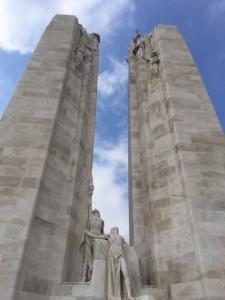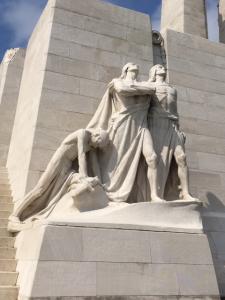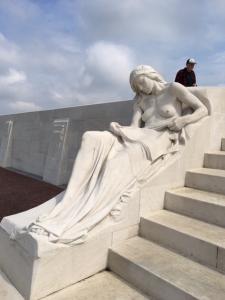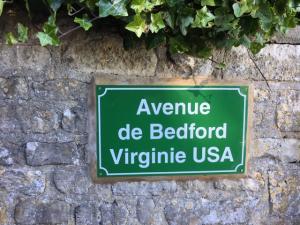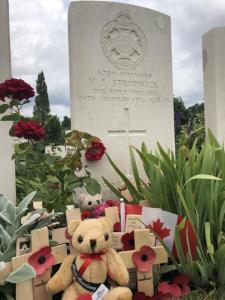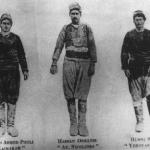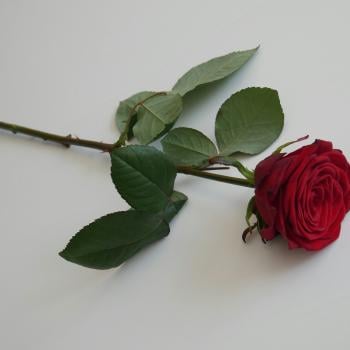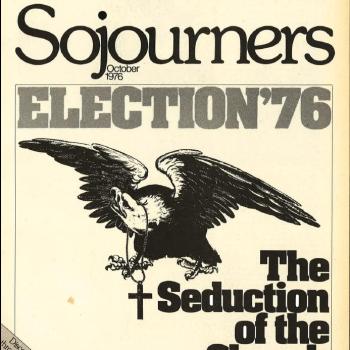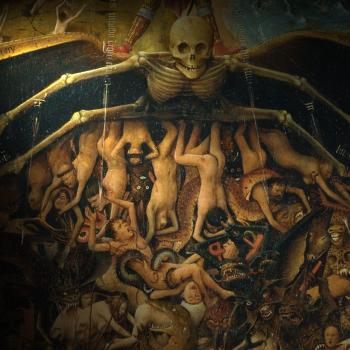A month ago today, I started a European tour on the history of the two world wars. While we opened with three days in London and closed with three more in Paris and Munich, the heart of the tour was the four days we spent on the former battlefields of Flanders, Vimy, the Somme, and Normandy. The latter was particularly powerful for this group of Americans; not only did we arrive one week after the 75th anniversary of the D-Day landings, but many of those in our group were the children of men who had fought in France and other theaters of WWII.
Today I’m happy to publish some reflections from a quartet of tripgoers having a particular connection to this blog: Kathy and Crawford Allison of Waco, Texas are Beth’s parents; and Elaine and Dick Gehrz of Pulaski, Virginia are mine.
Thanks to our moms and dads for sharing their thoughts!
Crawford: The details made the difference for me on this trip. Travelers to historic places get a fuller sense of a place and its events than those who only read or watch pictures, videos, movies about places… The air we breathed, the smells of the locality, the sense of prior history with us in the same place, the interactions with the peoples of those WWI and II locations all add up to a more evocative and intense experience. The personalized vignettes that Carl [our guide] provided brought the events and locations more to life than most people will get if they only read about the wars.

Kathy: Seeing the fields in Flanders that were so green and beautiful was in such stark contrast to the pictures of the battle scenes. It made me wonder how the people who had farms and lived in the towns close to the battlefields and trenches were able to survive during the upheaval. Having never lived in a war zone, seeing these areas made me think about the awfulness and total disruption of “normal” life that war brings.
Dick: The visual impact of the Canadian National Vimy Memorial [at the ridge where that nation’s forces won a battle in April 1917] was very moving. The two columns represented France and Canada, the blue sky between symbolized the Atlantic Ocean between the countries. A statue on the corner showed a sword being broken: a controversial ideal at the time, perhaps more poignant now. The two front statues of the mother and the father grieving at the news of their loss was so beautifully done.
Kathy: Watching the ceremony at the Omaha Beach cemetery, as a D-Day veteran received an American flag, made me think of my father who served in the European theater. Although he did not participate in D-Day, he was in the Battle if the Bulge and arrived at Buchenwald five hours after it was liberated. He never talked of the war until he was in his eighties, but his horror of how the inmates of Buchenwald, and other concentration camps, were treated was very evident in the respect and honor he had for all humans, regardless of religion or race. In watching the ceremony I thought of how honored my father would have been that those in France remembered and were grateful to those who had fought for and with them against the Axis powers.
Elaine: Normandy was especially moving… The National D-Day Memorial in Bedford, Virginia is about 75 minutes from our house, and my dad’s brother, Alvin Peterson, was in the first group of bulldozer operators landed on D-Day. He helped build roads for moving equipment and supplies and evacuating the wounded.
Kathy: Viewing the cemeteries of both wars and seeing the memorials built for the dead and missing in action made the deep sorrow of both the families and the nations who lost so many young men very real and tangible. Looking at my two grandsons who came on the trip made me mourn for and with those who lost their sons and fathers, grandsons and brothers…Looking at the atrocities and the loss of life, I keep thinking there has to be a better way than war, and at the same time knowing that in our humanness we will continue to war against those who we perceive as threats to us and our way of life.
Dick: I also was struck by the (imposed) difference in the WWI cemeteries. The Allies’ had upright white stone crosses or tombstones with the buried’s name, country, etc and occasionally sentiments of the parents. The dead were buried individually whenever possible. (Where it was impossible to sort out remains they were buried together with their tombstones set sides touching.). Flowers and statues were commonplace. The German cemetery at Langemark was limited to black stones, laid flat on the ground. No flowers, only permitted limited statuary, oak trees. Graves held multiple dead, with a strong sense of sacrifice for the fatherland.
Kathy: Travel often gets me out of my comfort zone. This trip helped me remember that both “sides” of both World Wars were people more alike than different from one another. It was challenging and informative to hear and read perspectives from other nationalities than Americans about the “whys” of the wars.
Crawford: I have a much greater sense of the weightiness and intensity of noise and danger at the sites we saw. The cemeteries were, in some ways, overwhelming when presented with the almost unending rows of crosses and grave markers, representing individuals and masses of dead and gone soldiers, but still remembered and honored. The horror of war and battles in wars were brought much closer to the reality of those hundred years ago times.


